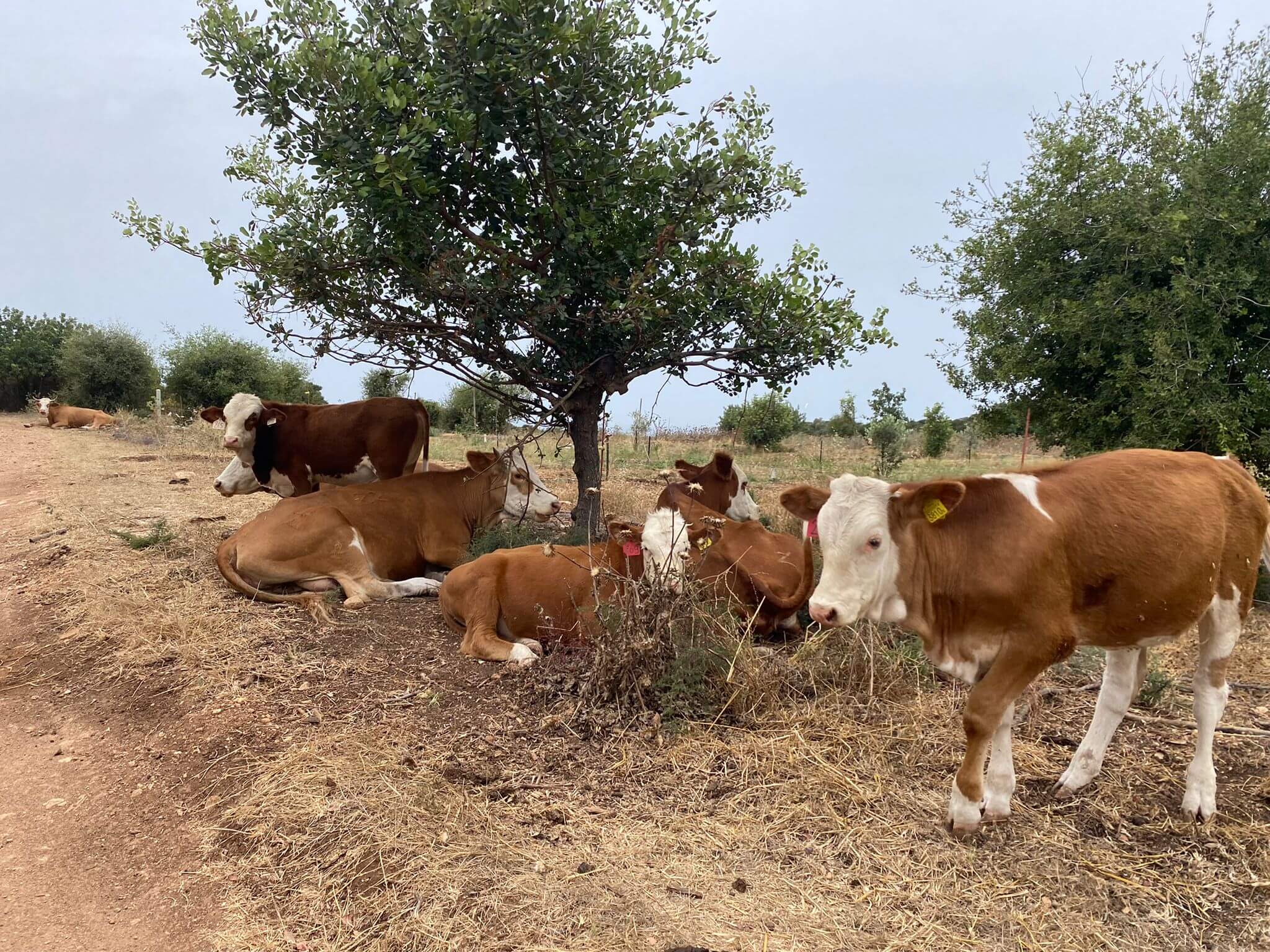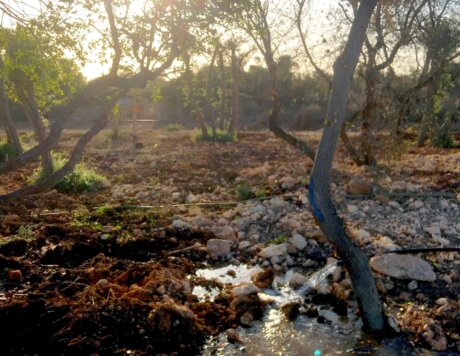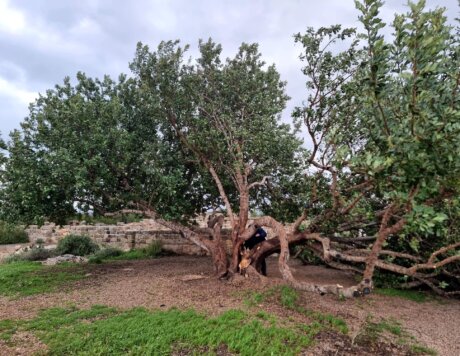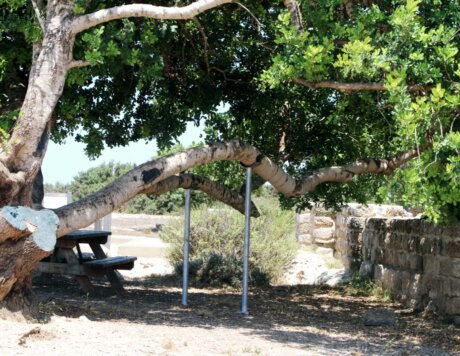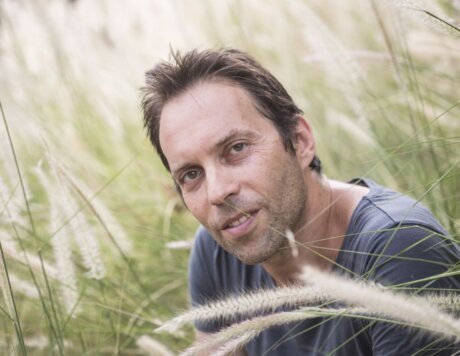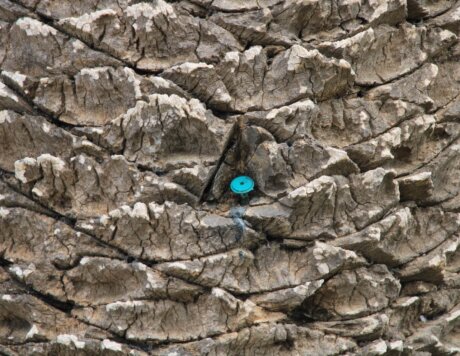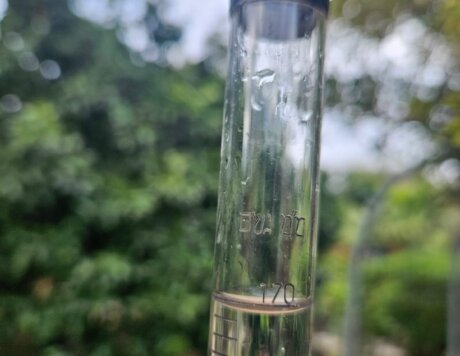This is the story of a carob tree that was brought to Ramat Hanadiv about four years ago, withered and broken. Then, it looked like a miserable stick, and due to its sad appearance we didn’t believe it would recover. However, Mahfouz, a perceptive, experienced ranger in the Nature Park, was not shocked by its appearance; he planted it, showered it with love, and told all the non-believers and ridiculers two words: ‘Wait p-a-t-i-e-n-t-l-y!’.
Indeed, the tree became stronger and recovered. After some time it produced a healthy branch, and then another, followed by leaves and flowers. Over four years it grew into a beautiful, strong tree that in the future will give shade and fruit just like its brothers, the other carob trees in the park, and live for hundreds more years.
Another beloved carob tree, which was hit during the last storm of 2023, is the ancient carob tree growing right out of the ruins of Horvat ‘Aqav (the red trail – the Manor trail). The beautiful, large tree broke during the last winter storm and was treated soon after; it was significantly pruned and two supporting poles were added. In addition, the nearby carob trees had their canopies pruned into a taller shape and the surrounding shrubs were also pruned.


